Our ENG111 textbook addresses Scientific Methods within the Narrative chapters. As most of our students are not intending on studying English as a major/minor, I’ve found a need to take some time and address this narrative practice and its applications for our students.
IMRaD stand for Introduction, Methods, Results, & Discussion. We most often associate it with Chemistry or another science course – as the way we write up the documentation for our experiments. But, it also comes into play in our careers and future work – as SOAP notes in medicine, as maintenance reports in labor related jobs, and as documentations we complete with employees (evaluations, corrective plans, etc.). We introduce what the issue or problem is. We discuss how we are going to probe the problem and narrow down what the core parts of the problem are, and how we can measure them… then hypothesize how we can potentially address the problem in the most effective way, evaluate and test the options to find the desired result (or a result), and then reflect on how we can do this better in the future. Whether a differential diagnosis in medicine or a corrective action(s) report with an employee, we’re practicing the same skills of asking questions, making observations, developing our ideas, testing our ideas, and drawing conclusions (and most importantly, asking ourselves how we could be better in the future).
Our Scientific Methods project is the capstone of our narrative unit. In order to get students to think through SM, I present them with a “Food Challenge”. The class must work together to deduct either the identity or ingredients (or both) of multiple mystery food samples. Each student gets a sample – using their senses, background knowledge, and different individual approaches – they work to deduce what the item is. (multiple surveys are done prior to this lesson to determine food preferences, food allergies, etc. so that those needs are addressed).
Listening to discussions, you hear phrases like,
“This reminds me of…..”
Or
“This is a little like ____, but it’s more ______ than I remember.”
Some students breakdown their analysis as a whole made up of parts:
“I taste several spices including cumin, coriander, ginger, garlic….”
This project sparks storytelling amongst students. Those who have traveled abroad discuss how the food reminds them of a dish they experienced in Greece or Asia. Others recall specific restaurants or stores that they have been in that ‘smell like this dish’….
- they actually enjoyed it. still smiling at the end.
- various ingredients
- flat bread
- ramen noodle salad
- chinese dumplings
- seikh kebabs
- they tried everything. their bowls are clean.
- brainstorming how we document this experience using scientific methods
This year we worked through seven mystery foods. We started with White Rabbits – a milk flavored candy from China. We then tried seaweed chips from Japan, ramen noodle salad, fried rice, Seikh kebabs (vegetarian) with riata from India, flatbread and hummus, and homemade Chinese potstickers. The foods were chosen because they were different from typical American fare and would present students with an opportunity to ‘try something new’.
The most rewarding part of this project was listening to students’ discussions and reflections. They discovered that as individuals, they call came to the process a bit differently. They used different methods and deductive reasoning to come to the same conclusion. They indeed discovered that they don’t think, process, or deduce the same ways as their fellow classmates – and this may just be a lesson that carries over into other aspects of school and life! They also found that they had a wide range of past experiences that they used to make sense of the foods they were trying. Some foods had been previously experienced by those who had travelled abroad. Another, a student in the culinary program, took a very different approach, disassembling each dish into its ingredients and flavor profiles. Everyone started with a foundation of what they know (prior knowledge) and used this to scaffold their thoughts to discover something new. The comparisons and contrasts of shared prior knowledge allowed all of the students to be successful in their quest to identify the mystery foods – and they learned a lot about each other through the process too.


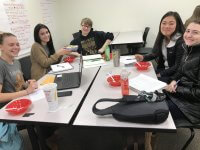
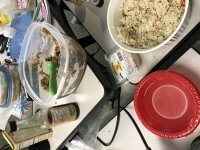
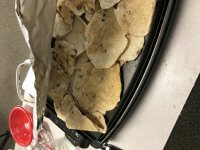
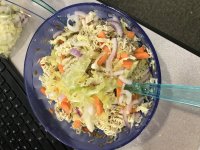
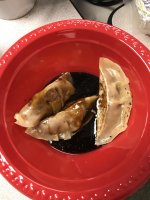
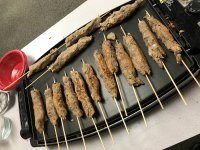
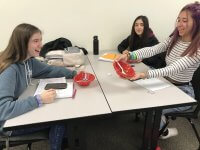
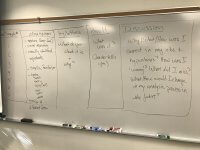
I happened to be walking down the hallway while Cathy and her class were doing this. I crashed the class and got to try the dumplings. They were outstanding.